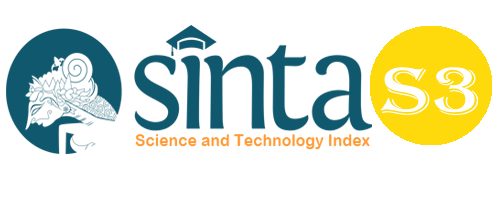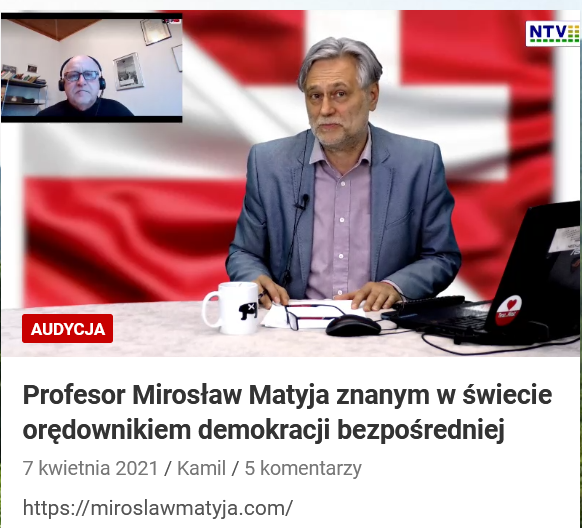The Effect of Work-From Home on Burnout during COVID-19 Disease: The Mediating Effect of Organizational and Family Support
Abstract
Coronavirus (COVID-19), which hit in early 2020, changed the way people live and work, and affected industries and organizations all over the world. Many organizations have begun to deliver a new way of working to adapt to these shifts effectively using teleworking or a work from home policy. The purpose of this study was to fill the gaps by investigating several potential predictors of job satisfaction during working from home from the impact of COVID-19 such as work–life balance and work stress. Using a quantitative approach, 136 workers who were forced to work from home all over Indonesia participated, and the responses were analysed using PROCESS macro software. The results supported hypothesis that family support and organizational support mediate the relationship of work–life balance and burnout. It is imperative for the organizations to take substantial steps to reduce burnout on employees during COVID-19 disease, nurture decision autonomy at all levels of hierarchy and encourage amiable relationships of employees with their supervisors and peers based on mutual trust and support.
Keywords
Full Text:
PDFReferences
Allen, T.D., Johnson, R.C., Kiburz, K.M. and Shockley, K.M. (2013), “Work–family conflict and flexible work arrangements: Deconstructing flexibility”, Personnel Psychology, Vol. 66 No. 2, pp. 345-376, doi: 10.1111/peps.12012.
Ammons, Samantha K., and William T. Markham. 2004. Working at Hdome: Experiences of Skilled White Collar Workers. Sociological Spectrum 24: 191–238. [
and Enhancement. Journal of Occupational Health Psychology 14: 441–56.
Azarbouyeh, Amir, and Seyed Gholamreza Jalali Naini. 2014. A Study on the Effect of Teleworking on Quality of Work Life. Management Science Letters 4: 1063–68.
Castanheira, F. and Chambel, M.J. (2010a), “Reducing burnout in call centers through HR practices”, Human Resource Management, Vol. 49 No. 6, pp. 1047-1065
Cooper dan Schinder. (2011). Business Research Methods. McGraw-Hill Education.
Edmondson A. Psychology Safety and Learning Behavior in Teams. Administrative Science Quarterly. 1999;44(2):350-83.
Eisenberger R, Stinglhamber F. Perceived organizational support. Journal of Applied Psychology. 1986;71(3):500-7.
Ellis, Selwyn T., and Robert L. Webster. 1998. IS Managers’ Innovation toward Telecommuting: A Structural Equation Model. Proceedings of the Hawaii International Conference on System Sciences 4: 161–68. [
Fedáková, Denisa, and Lucia Išto ˇnová. 2017. Slovak IT-Employees and New Ways of Working: Impact on Work-Family Borders and Work-Family Balance. Ceskoslovensk ˇ á Psychologie (Czechoslovak Psychology) LXI: 68–83.
Fisher, Gwenith G., Carrie A. Bulger, and Carlla S. Smith. 2009. Beyond Work and Family: A Measure of Work/Nonwork Interference
Gaffey AE, Aranda F, Burns JW, Purim-Shem-Tov YA, Burgess HJ, Beckham JC, Hobfoll SE. Race, psychoso- cial vulnerability and social support differences in inner-city women’s symptoms of posttraumatic stress disorder. Anxi- ety, Stress, & Coping. 2018;1–14.
Hair, Jr., Joseph, F., William, C., Barry, JB., dan Rolph, E. (2014). Multivariate Data Analysis. Seventh Edition, Pearson Education Limited, New Jersey.
Han P, Liu XT, Chen X. An Exploration into the Relationship among Organizational Trust, Psychological Safety and Work stress. Management Review. 2017;29(10):108-19.
Havermans BM, Boot CRL, Houtman ILD, Brouwers EPM, Anema JR, Beek AJ. The role of autonomy and social support in the relation between psychosocial safety cli- mate and stress in health care workers. BMC Public Health. 2017;17(1).
Hobfoll SE. Conservation of resources: A new attempt at conceptualizing stress. American Psychologist. 1989;44(3): 513–24.
Jacobs J, Oosterbeek M, Tummers LG, Noordegraaf M, Yzermans CJ, Du ̈ckers MLA. The organization of post-disaster psychosocial support in the Netherlands: a meta-synthesis. European Journal of Psychotraumatology. 2019;10(1):1544024.
Jones-Johnson G, Johnson WR. Subjective Underemployment and Psychosocial Stress: The Role of Perceived Social and Supervisor Support. The Journal of Social Psychology. 1992;132(1):11–21.
Kahn WA. Psychological Conditions of Personal Engagement and Disengagement at Work. Academy of Management Journal.1990;33(4):692–724.
Karasek, R.A. and Theorell, T. (1990), Health Work: stress, Productivity, and the Reconstruction of Working Life, Basic Books, New York, NY.
Karasek, R.A. Jr, (1979), “Job demands, job decision latitude, and mental strain: Implications for job redesign”, Administrative science quarterly, pp. 285-308, doi: 10.2307/2392498.
Kazekami, Sachiko. 2020. Mechanisms to Improve Labor Productivity by Performing Telework. Telecommunications Policy 44: 101868.
Kramer, Amit, and Karen Z. Kramer. 2020. The Potential Impact of the Covid-19 Pandemic on Occupational Status, Work from Home, and Occupational Mobility. Journal of Vocational Behavior, 103442.
Li N, Yan J. Pathways of organizational trust atmosphere on task performance. Journal of Psychology. 2007;39(6): 1111-21.
Liu L, Mei Q, Wu JN. Employee Well-being, Work stress and Innovative Behavior: The Regulatory Role of Perceived Organizational Support. Science & Technology Progress and Policy. 2020;
Liu, Huei Ling, and Ven hwei Lo. 2018. An Integrated Model of Workload, Autonomy, Burnout, Job Satisfaction, and Turnover Intention among Taiwanese Reporters. Asian Journal of Communication 28: 153–69
Malecki CK, Demaray MK. Measuring perceived social support, development of the child and adolescents social support scales. Psychology in the School. 2002;39:1-18.
Martin, Brittany Harker, and Rhiannon MacDonnell. 2012. Is Telework Effective for Organizations?: A Meta-Analysis of Empirical Research on Perceptions of Telework and Organizational Outcomes. Management Research Review 35: 602–16.
Neufeld, Derrick J., and Yulin Fang. 2005. Individual, Social and Situational Determinants of Telecommuter Productivity. Information and Management 42: 1037–49.
Neuman, W. L. (2014). Basic Social Research Qualitive and Quantitative Approaches. Second Edition, Pearson Education. Inc.
Ningrum, P. et al. (2020). The Potential of Poverty in the City of Palangka Raya: Study SMIs Affected Pandemic Covid 19. Budapest International Research and Critics Institute Journal (BIRCI-Journal). P. 1626-1634
Putranti, H. R. D., Suparmi, S., & Susilo, A. (2020). Work Life Balance (WLB) Complexity and Performance of Employees during Covid-19 Pandemic. Arthatama, 4(1), 56-68.
Rantanen, J., Kinnunen, U. and Pulkkinen, L. (2013), “The role of personality and role engagement in work-family balance”, Psihološka Obzorja/Horizons of Psychology, Vol. 22, pp. 14-26
Searle, B., Bright, J.E. and Bochner, S. (2001), “Helping people to sort it out: the role of social support in the job strain model”, Work and Stress, Vol. 15 No. 4, pp. 328-346
Sihombing, E and Nasib, (2020). The Decision of Choosing Course in the Era of Covid 19 through the Telemarketing Program, Personal Selling and College Image. Budapest International Research and Critics Institute-Journal (BIRCI-Journal). P. 2843-2850.
Tugsal, Turker. "The Mediator Role Of Social Support Amid Work-Life Balance And Burnout Of Employees'in The Context Of Coronavirus Pandemic Precautions And Social Isolation." Beykent Universitesi Sosyal Bilimler Dergisi 13.1 (2020): 6-18.
Turner RJ, Grindstaff CF, Phillips N. Social Support and Outcome in Teenage Pregnancy. Journal of Health and Social Behavior. 1990;31(1):43.
Wang YF. Review on the relationship between social sup- port and physical and mental health. Psychological Science. 2004;(05):1175-7.
Weinberg M. The Mediating Role of Posttraumatic Stress Disorder with Tendency to Forgive, Social Support, and Psy- chosocial Functioning of Terror Survivors. Health & Social Work. 2018;43(3):147-54.
DOI: https://doi.org/10.33258/birci.v5i1.3785
Article Metrics
Abstract view : 557 timesPDF - 137 times
Refbacks
- There are currently no refbacks.

This work is licensed under a Creative Commons Attribution-ShareAlike 4.0 International License.

This work is licensed under a Creative Commons Attribution-ShareAlike 4.0 International License.

_.gif)

















_.gif)



